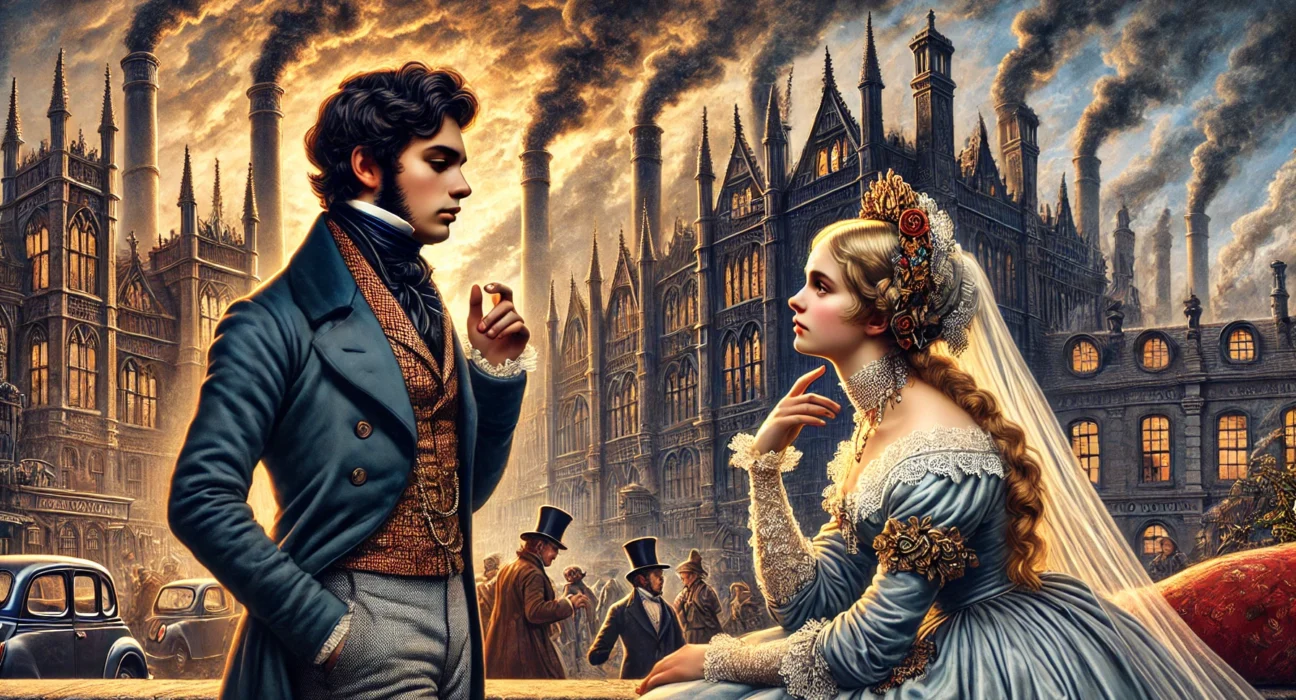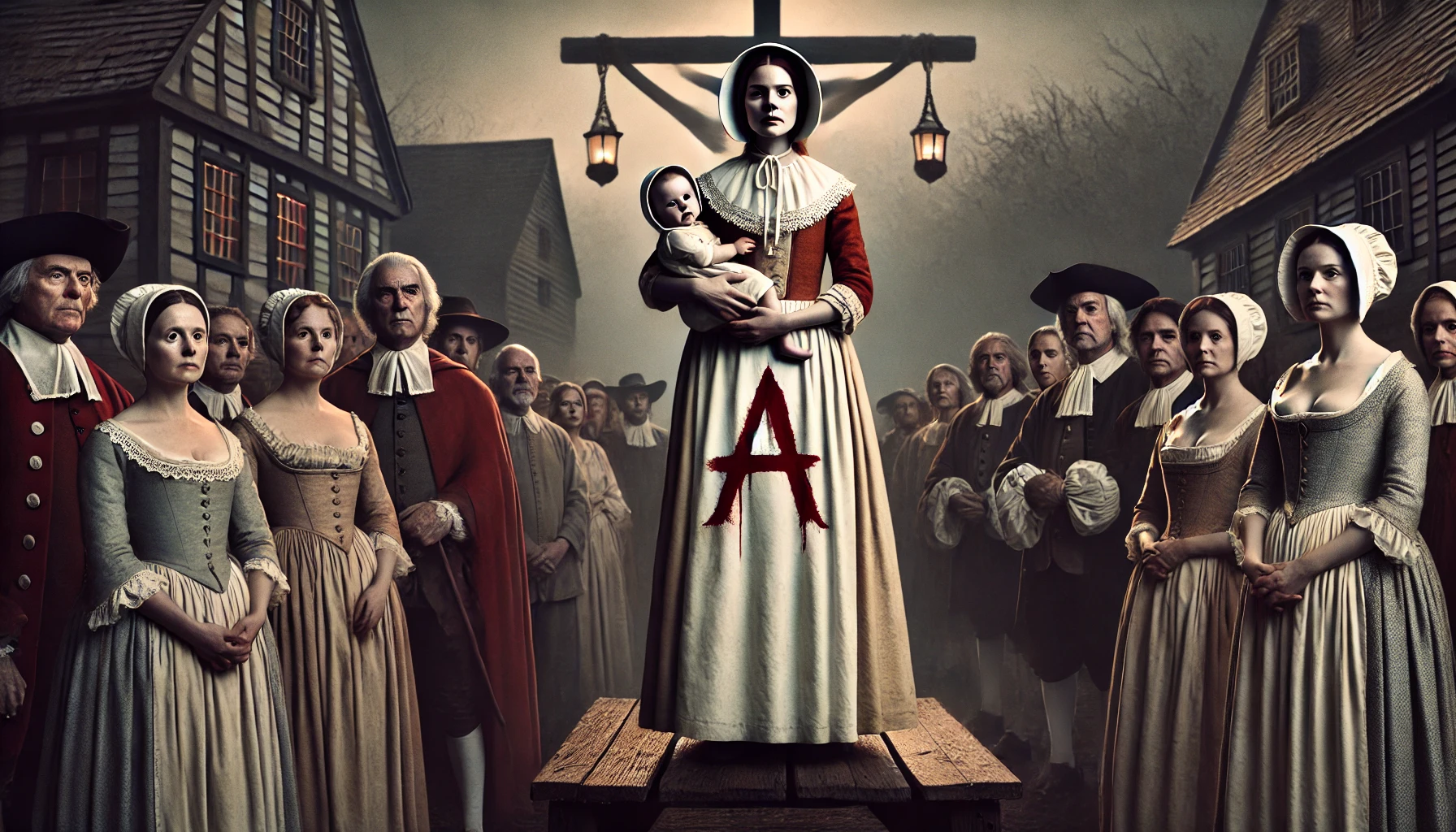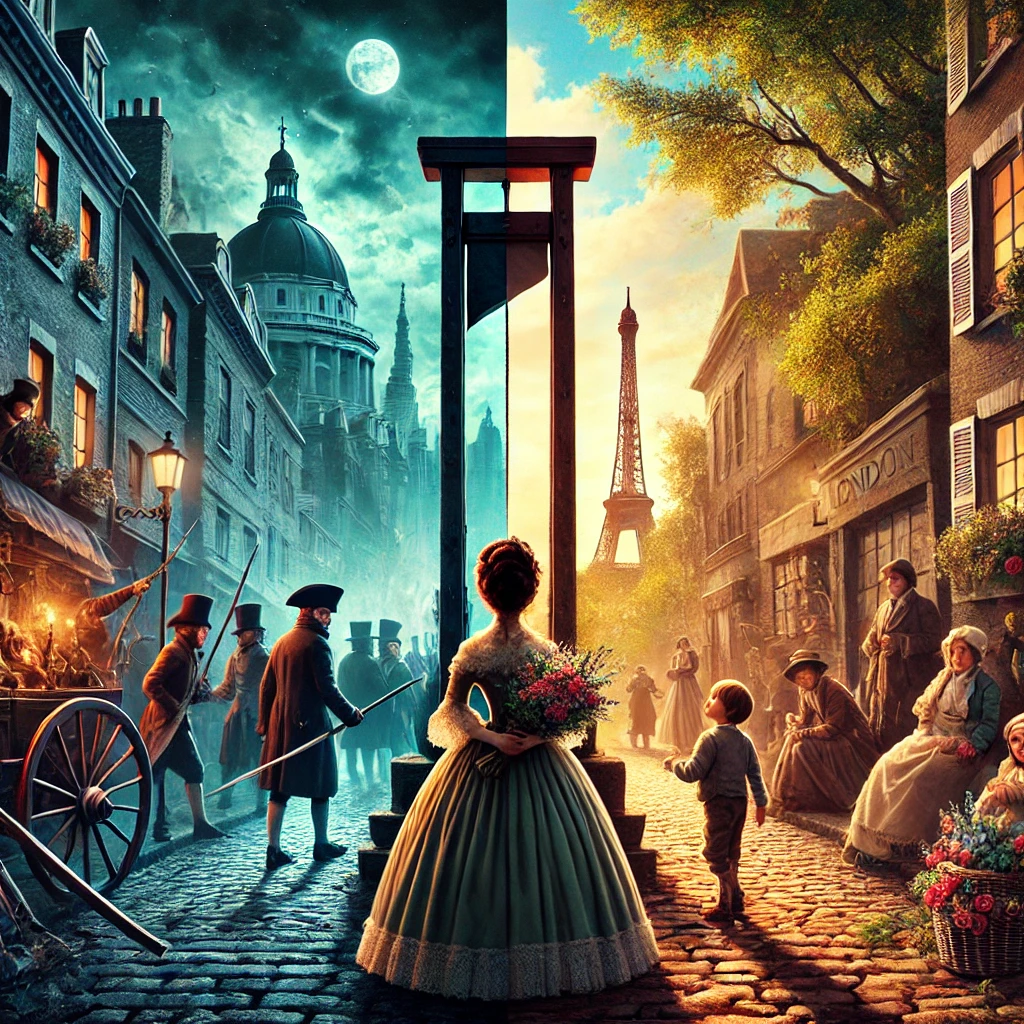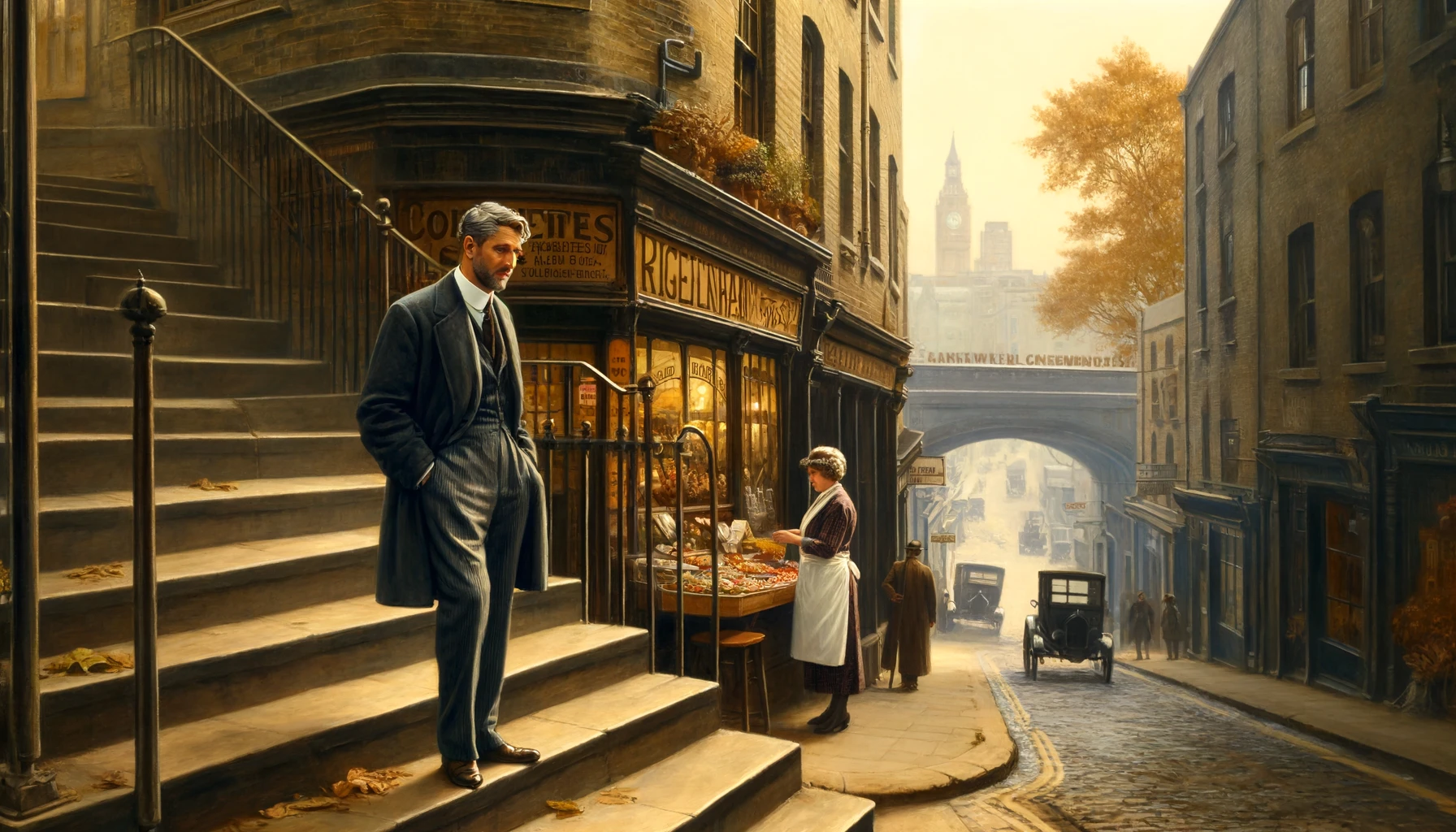Sybil, or The Two Nations is a novel written by Benjamin Disraeli, published in 1845. Set in early Victorian England, during the rise of industrialization, the novel examines the profound social and economic divisions between the wealthy aristocracy and the impoverished working class. Disraeli, a prominent political figure who would later become Prime Minister of the United Kingdom, uses Sybil to critique the consequences of industrial capitalism and the alienation of the working classes from the ruling elite. The title “Two Nations” refers to the stark divide between the rich and poor, whose lives and experiences are so different that they almost seem to belong to separate nations.
Plot Summary
On a warm summer evening in 1837, Charles Egremont, a young aristocrat, is lounging in a lavish room among the elite of London, unconcerned with the world beyond the glittering walls of his society. His elder brother, Lord Marney, is more concerned with power and maintaining his estates than with the well-being of those who toil under the grinding wheels of England’s rapidly industrializing economy. For Charles, life is a series of entertainments, races, and banquets, disconnected from the struggles of the masses. Yet, fate has plans to draw him into a different world—one that is far removed from the opulence of his own.
Egremont’s journey begins when he meets Sybil Gerard, the beautiful and idealistic daughter of Walter Gerard, a working-class leader and a passionate advocate for the rights of laborers. Sybil’s world is one of suffering and deprivation, far from the wealth and privilege that Charles has known. Her father, Gerard, is deeply involved in the Chartist movement, which seeks political reform and greater representation for the working class. Sybil’s compassion and commitment to the plight of the poor stir something in Charles, making him question the complacency of his own life.
As he gets to know Sybil, Charles learns of the “two nations” that exist within England—the rich and the poor—divided not just by wealth but by an almost insurmountable chasm of understanding. Sybil and her father live in the shadow of the factories that now dominate the landscape, where laborers work long hours in dangerous conditions for meager wages. They face unemployment, starvation, and disease while the wealthy live in comfort, indifferent to their suffering.
Charles’s encounters with the working class, particularly through Sybil and her father, open his eyes to the injustices of the system. He realizes that the poor are not inherently inferior but are victims of circumstances and exploitation. His growing admiration for Sybil leads him to spend more time with the laborers, listening to their grievances and witnessing the harsh realities they face. Sybil herself is a symbol of purity and hope, her moral compass unwavering despite the struggles around her. Charles is drawn not only to her beauty but to her strength of character and her desire to help others.
Meanwhile, tensions between the working class and the government escalate. Gerard and his fellow Chartists organize protests and push for reforms, including universal male suffrage and better working conditions. But the government and the upper classes, represented by men like Lord Marney, are resistant to change. The aristocracy fears that giving power to the people will threaten their own privileges. Lord Marney himself is an unsympathetic figure, consumed by his desire for control and wealth. He has no concern for the workers on his land, who live in squalor while he indulges in luxury.
As the Chartist movement gains momentum, the threat of violence looms. Gerard, who has always sought peaceful change, finds himself at odds with more radical elements within the movement. There are those, like Stephen Morley, a radical journalist and fellow Chartist, who believe that more aggressive tactics are necessary. Morley is in love with Sybil and sees Charles as a rival, both for her affections and for the future of England. He represents the intellectual side of the movement but is willing to embrace harsher methods if it means achieving his goals.
The divide between rich and poor reaches a breaking point when a riot breaks out in one of the industrial towns. Workers, fed up with their living conditions and the lack of progress, rise up in anger. Charles finds himself caught in the middle of the chaos, torn between his loyalty to his class and his newfound sympathy for the workers. He watches as the authorities brutally suppress the uprising, killing many and imprisoning others. Among the casualties are men who once followed Gerard’s leadership. The experience shakes Charles to his core, forcing him to confront the reality of the “two nations” in a way he never expected.
Through his love for Sybil, Charles comes to understand the depth of the problems facing England. Sybil, though in love with Charles, is torn between her feelings for him and her commitment to the working-class cause. She fears that a relationship with a man of his class will compromise her ideals, but at the same time, she cannot deny the bond they share.
Tragedy strikes when Walter Gerard, having dedicated his life to the workers’ cause, dies, worn out by the struggle for justice. His death is a symbol of the larger defeat of the Chartist movement, which fails to achieve its immediate goals despite its moral victory in raising awareness of the plight of the poor. Sybil is devastated by her father’s death but remains committed to the cause for which he fought. Charles, now fully awakened to the responsibilities of his class, resolves to continue the fight for reform, though he recognizes that it will be a long and difficult road.
In the end, Charles and Sybil’s love becomes a metaphor for the possibility of reconciliation between the two nations. While their relationship is fraught with challenges, it also holds the promise of a new understanding between the rich and the poor. The novel ends on a note of hope, with Charles determined to use his influence to bring about change, and Sybil by his side, still advocating for the rights of the downtrodden.
By the conclusion, Disraeli’s message is clear: without compassion and reform, the divide between the two nations will continue to grow, threatening the stability of society itself. The novel calls for unity, urging the privileged to recognize their duty to those less fortunate and work together for a fairer and more just England.
Main Characters
Charles Egremont – The protagonist of the novel, Charles is the younger son of a noble family. Initially disconnected from the plight of the poor, his journey of enlightenment forms the backbone of the story. As he becomes romantically involved with Sybil, he gradually understands the harsh realities faced by the working class and transforms from a passive observer into a more socially conscious individual.
Sybil Gerard – The titular character, Sybil is the daughter of the radical working-class leader Gerard. She is beautiful, idealistic, and deeply committed to improving the lives of the poor. Sybil embodies virtue and hope for a more just society. Her relationship with Egremont creates a bridge between the two “nations” and symbolizes the possibility of unity.
Walter Gerard – Sybil’s father, a working-class hero, and a prominent Chartist leader, advocating for political and social reform. Gerard represents the voice of the oppressed and struggles to secure better conditions for the laboring masses. His relationship with his daughter is tender and protective, and his leadership role makes him a key figure in the workers’ struggle.
Lord Marney – Egremont’s elder brother, Lord Marney is the opposite of Charles in many ways. He is a callous, self-serving aristocrat who embodies the selfishness and greed of the upper class. His lack of empathy for the poor represents the entrenched opposition to social change within the ruling elite.
Stephen Morley – A radical journalist and another working-class advocate who is in love with Sybil. Morley is driven by intellectual zeal and his commitment to the workers’ cause. He is a foil to Egremont, challenging both his ideas and his relationship with Sybil.
Theme
Class Division and “The Two Nations” – The novel’s central theme is the deep divide between the rich and the poor. Disraeli portrays England as being made up of two nations living side by side but utterly disconnected: the wealthy upper class and the impoverished working class. The book emphasizes the social injustice and alienation faced by the laboring poor, particularly those in industrial towns.
Industrialization and Its Consequences – The rise of factories and the industrial revolution in England brought immense wealth to a few but left many workers living in squalor. The novel highlights the grim conditions in which the working class lived, often in stark contrast to the comfort and extravagance of the upper class. The exploitation of labor, poor living conditions, and lack of worker rights are key motifs.
Political Reform and Chartism – Disraeli weaves the Chartist movement into the novel, with characters like Gerard and Morley representing the call for greater political representation and worker rights. Chartism, a working-class movement that sought political reforms including universal male suffrage, is depicted as a response to the systemic inequality of the time.
Romantic Idealism vs. Political Pragmatism – The romantic relationship between Sybil and Egremont is intertwined with larger political questions. Their love represents an idealistic bridge between the two nations, but the novel also explores the tension between lofty ideals and practical solutions. Through various characters, Disraeli questions whether intellectual and idealistic solutions are enough to solve deeply entrenched societal problems.
The Role of Religion – Religion plays an important role in shaping the values of characters like Sybil, who sees faith as a path to understanding and justice. Religious institutions, however, are also critiqued for their complicity in maintaining the status quo, and some clergy are portrayed as out of touch with the suffering of the poor.
Writing Style and Tone
Disraeli’s writing style in Sybil is both intellectual and dramatic, filled with political commentary and vivid descriptions. He uses a combination of dialogue-driven scenes and detailed narrative passages to convey the social divide and create a sense of urgency around the plight of the working class. The language is formal, reflecting Disraeli’s background as a statesman and intellectual, but it is also charged with emotional intensity, especially in moments of political upheaval or personal revelation.
The tone of the novel is often sympathetic towards the working class, but it maintains a critical distance. Disraeli, through the character of Egremont, seeks to bridge the gap between the two nations, showing the reader both the luxury of the aristocracy and the suffering of the workers. The tone can be didactic at times, as Disraeli uses the narrative to promote his political views and call for reform. Despite this, there is a strong undercurrent of romantic idealism, particularly in the portrayal of Sybil and her purity of heart. The novel blends realism with a sense of moral earnestness, urging readers to reflect on the state of society and the need for unity and compassion across class lines.
We hope this summary has sparked your interest and would appreciate you following Celsius 233 on social media:
There’s a treasure trove of other fascinating book summaries waiting for you. Check out our collection of stories that inspire, thrill, and provoke thought, just like this one by checking out the Book Shelf or the Library
Remember, while our summaries capture the essence, they can never replace the full experience of reading the book. If this summary intrigued you, consider diving into the complete story – buy the book and immerse yourself in the author’s original work.
If you want to request a book summary, click here.
When Saurabh is not working/watching football/reading books/traveling, you can reach him via Twitter/X, LinkedIn, or Threads
Restart reading!








